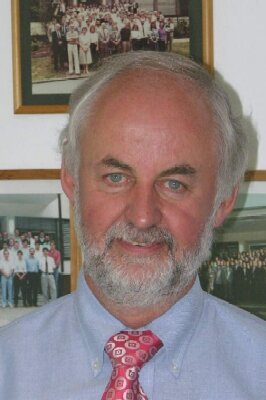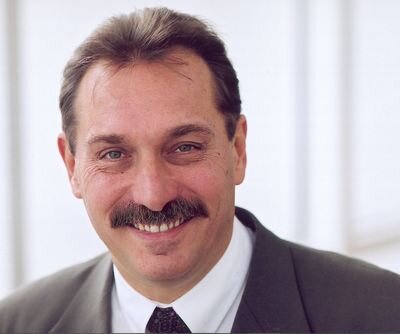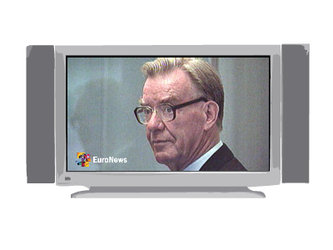ESOC memories: 30 years of passion and excitement
31 May 2005 marks ESA's 30th anniversary and a series of conversations with long-time ESOC personnel reveals that the passion and excitement of space exploration have animated ESA right from the start.
Jean-Francois Kaufeler
Head of the Ground Systems Engineering Department
Jean-Francois Kaufeler is one of ESOC's longest-serving engineers, having started work here in April 1974. Then, ESOC was known as the European Space Data Archiving Centre (ESDAC) and its original role was to process and store data from satellites and science missions.
"Back then, we were working in ESOC's pioneer days. We had a few engineers who had experience from NASA and other places, but we started to build an operations centre from scratch! ESOC was only a data processing centre, and in 1974/75, it became ESA's flight operations control centre, so we had to develop an 'operations culture'. We had a lot of people with military operations' backgrounds and they shared their experience, but we had to engineer everything ourselves. We had to develop the full complex of data processing resources for flight operations."
"As you can imagine, 30 years ago computers were completely different. We didn't even have punch cards for entering programme instructions; we used punched-tape readers. Whenever you made some small programming change you had to repunch the entire tape. Eventually, technology improved; we got punch cards and then they were replaced by hard disks storing files that could be directly edited onscreen."
"Also early on, computers were a scare resource. We had only one large mainframe development computer at ESOC and computing time had to be shared. So we were working in shifts, not only for operations but also for engineering. If you booked your time between midnight and 4 o'clock in the morning, people would stay until dawn, then go home for a few hours sleep and be back at lunchtime. You had to be flexible; people were willing to do whatever had to be done."
"In the next 30 years, I hope we are as successful as we have been in the past 30. We have shown that we are capable of adapting to change, whether related to technology or policy. There are new programmes and we are now improving how we harmonize and integrate with other agencies like CNES and DLR. I am confident that we will be able to manage quite well."
Alan Smith
Head of the Flight Operations Division

Alan Smith arrived at ESOC as a contractor in October 1976 and joined ESA full-time in April 1980. He has served as Spacecraft Operations Manager (SOM) or Flight Director on over 25 missions including MARECS, Rosetta, Huygens and many others.
"In 1976, ESOC was still new — an exciting place to work. It had more of an 'expat' feeling compared to now. Everyone was trying to fit into an international lifestyle. People from the many different nationalities worked well together and that hasn't changed. There was a lot more organised social contact at ESOC, including regular dances in the canteen and monthly movie nights that were absolutely full."
"One of the most memorable launches was OTS-1 in 1977. It was the biggest shock of my life when the launcher blew up, as in those days nobody really considered it might happen. Later, I was a SOM for OTS-2. I ended up acting as SOM for six launches in total. Physically, the Main Control Room and the Briefing Room haven't changed much over the years, although the workstations and technology have been updated several times. The satellites we operate have also become a lot more sophisticated with far greater autonomous functionality and much higher data rates."
"In another 30 years, I expect ESOC will still be here; there will still be missions to fly. It would be nice if ESOC could play a role in a future international manned mission to Mars."
Angela Head
Systems Engineer, Ground Segment Support

Angela started working at ESOC as a contractor on the Hipparcos mission in the summer of 1986, later joining ESA as a full-time staffer in July 1989.
"In my first job, I wrote software for Hipparcos' mission control system. Since then, I've worked on missions including ISO (the Infrared Space Observatory), Integral, ERS, Cluster, MSG and Herschel/Planck, as well as other projects. The most exciting aspect of my work at ESOC has been the results-oriented team spirit; plus, the scope of work, which is always expanding. The closer we get to a launch, the closer everyone works together."
"Hipparcos was my first and most memorable launch. There was an engine failure on board, and we had to redesign the mission scenario to meet the scientific objectives, which were ultimately achieved. We had to rewrite a lot of software while the spacecraft was in operation. Also, the first Cluster launch was sadly spectacular, as the rocket exploded shortly after liftoff; but then witnessing Huygens landing on Titan and the Mars Express and Beagle missions were terribly exciting."
"Over the years, I think we have improved our customer orientation, whether for the European public or for customers to whom we provide operations services. We do a much better job now of telling people what we do and why it's important."
Dr Frank Danesy
Head of Human Resources Division, ESOC

Dr Danesy joined ESA from the European School of Management in 1991. He served initially at ESTEC as Head of the Recruitment and Training Section and moved to ESOC as Head of the Human Resources Division in 1999.
"In the early nineties, space still had something of the pioneering spirit. We have since transitioned to a situation in which space activities have become more of a business. For me, the best memories have been the direct contact with people at ESA and the opportunity to make an impact."
"In the past 15 years, ESA has become much more open, but also much more politically aware. Among university students and potential recruits, we see much more interest in ESA as a potential employer. We have achieved greater alignment of our management practices with those being practised by the best of private-sector organisations and it shows; we have a much stronger career management and professional development programme."
"In 1991, at ESTEC, we had some 1200 staff onsite, yet only some 350 participated in training seminars. By 1995, we had boosted this to 1200-1300 participants per year, with many, obviously, participating more than once."
"One of my most memorable moments followed the decision to consolidate the Directorate of Manned Spaceflight and Microgravity at ESTEC in 1996. In the space of just two weeks, we conducted hundreds of interviews to fill some 45 posts. It was a major undertaking but we got it done with dawn-to-midnight work days and some great teamwork."







